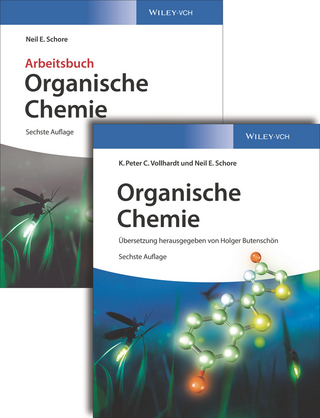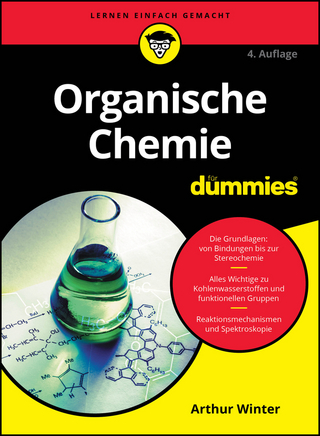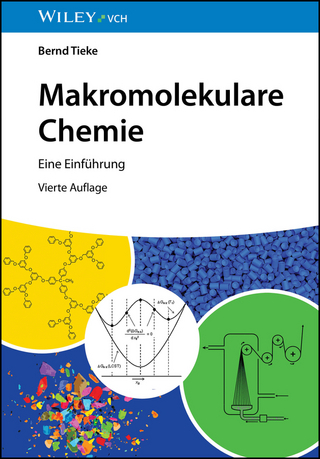
Materials Chemistry
Springer (Verlag)
978-94-024-1253-6 (ISBN)
- Titel erscheint in neuer Auflage
- Artikel merken
Bradley Fahlman is a professor of chemistry in the department of chemistry and biochemistry at Central Michigan University (CMU). He received a B.Sc. with high honors from the University of Regina (in Saskatchewan) in 1996. He was awarded a Ph.D. from Rice University in 2000 (adviser Prof. Andrew R. Barron) for his work on the organometallic synthesis of volatile Group 13 compounds and their application for thin-film growth via chemical vapor deposition. Dr. Fahlman joined the faculty at CMU in 2002 after a two-year postdoctoral appointment at the University of California, Irvine. His research interests include the synthesis of Group 14 nanostructures and doped metal oxide nanoparticles for energy storage applications, which have been supported by the National Science Foundation, Department of Defense (U.S. Army Tank Automotive Research Development & Engineering Center), Research Corporation, and the Dreyfus Foundation. He is co-author of more than 50 peer reviewed publications, has delivered more than 60 invited talks. Dr. Fahlman enjoys teaching general, inorganic, and materials chemistry at CMU. He is an advocate for contextual chemistry curricula as well as interactive and adaptable learning resources, which have greatly improved student motivation and interest. When not in the laboratory or classroom, Fahlman enjoys traveling with his wife, Diyonn, and is an avid golfer. Bradley Fahlman received a 2008 Textbook Excellence Award from the Text and Academic Authors Association (TAA) for the first edition of his book Materials Chemistry.
1. What is `Materials Chemistry`?.- 1.1. Historical Perspectives.- 1.2. `Bottom-Up` Materials Synthesis.- 1.3. Design of New Materials through a ‘Critical Thinking ‘Approach.- 1.4. Materials Sustainability.- Topics for Further Discussion; Further Reading.- References and Notes.- 2. Solid-State Chemistry 2.1. Amorphous vs. Crystalline Solids.- 2.2. Bonding in Solids I: Intermolecular Forces.- 2.2.1. Ionic Solids.- 2.2.2. Metallic Solids.- 2.2.3. Covalent Network Solids.- 2.2.4. Molecular Solids.- 2.3. Bonding in Solids II: Band Theory.- 2.4. The Crystalline State.- 2.4.1. Crystal Growth Techniques.- 2.4.2. Crystal Structures.- 2.4.3. Crystal Symmetry and Space Groups.- 2.4.4. Archetypical Interstitial Crystal Lattices.- 2.4.5. Superconductivity of Perovskites: Toward a Room-Temperature Superconductor.- 2.4.6. Crystal Imperfections.- 2.4.7. Physical Properties of Crystals.- 2.5. The Amorphous State.- 2.5.1. Sol-Gel Processing.- 2.5.2. Glasses.- 2.5.3. Cementitious Materials.- 2.5.4. Ceramics.- Solid-State Case Study I: Solid Electrolytes for Energy Storage Applications.- Solid-State Case Study II: Porous Materials: Zeolites and Metal-Organic Frameworks (MOFs).- Topics for Further Discussion.- Further Reading.- References and Notes.- 3. Metals.- 3.1. Mining and Processing of Metals.- 3.1.1. Powder Metallurgy.- 3.2. Metallic Structures and Properties.- 3.2.1. Phase Behavior of Iron-Carbon Alloys.- 3.2.2. Hardening Mechanisms of Steels.- 3.2.3. Stainless Steels.- 3.2.4. Nonferrous Metals and Alloys.- 3.3. Metal Surface Treatments for Corrosion Resistance.- 3.4. Magnetism.- 3.5. Metals Case Study: Hydrogen Storage.- Topics for Further Discussion.- Further Reading.- References and Notes.- 4. Semiconductors.- 4.1. Properties and Types of Semiconductors.- 4.2. Silicon-Based Applications.- 4.2.1. Silicon Wafer Production.- 4.2.2. Integrated Circuits.- 4.3. Light-Emitting Diodes: There is Life Outside of Silicon!.- 4.4. Thermoelectric (TE) Materials.- 4.5. Semiconductors Case Study: Photovoltaic (Solar) Cells.- Topics for Further Discussion.- Further Reading.- References and Notes.- 5. Polyermic Materials.- 5.1. Polymer Classifications and Nomenclature.- 5.2. Polymerization Mechanisms.- 5.3. "Soft Materials" Applications: Structure vs. Properties.- 5.3.1. Biomaterials Applications.- 5.3.2. Conductive Polymers.- 5.3.3. Molecular Magnets.- Important Polymeric Materials Applications: Self-Healing Polymers.- Topics for Further Discussion.- Further Reading.- References and Notes.- 6. Nanomaterials.- 6.1. The Toxicity of Nanomaterials.- 6.2. What is "Nanotechnology"?.- 6.3. Nanoscale Building Blocks and Applications.- 6.2.1. The Zero-Dimensional Nanomaterials.- 6.2.2. One-Dimensional Nanostructures.- 6.2.3. Two-Dimensional Nanostructures.- Important Nanomaterials Applications I: Lithium-Ion Batteries.- Important Nanomaterials Applications II: Nanoelectromechanical Systems (NEMS).- Topics for Further Discussion.- Further Reading.- References and Notes.- 7. Materials Characterization.- 7.1. X-Ray Scattering.- 7.1.1. X-Ray Diffraction (XRD).- 7.2. Optical Microscopy.- 7.3. Electron Microscopy.- 7.3.1. Transmission Electron Microscopy (TEM).- 7.3.2. Scanning Electron Microscopy (SEM).- 7.4. Surface Characterization Techniques Based on Particle Bombardment.- 7.4.1. Photoelectron Spectroscopy (PES).- 7.4.2. X-Ray Absorption Fine Structure (XAFS).- 7.4.3. Ion-Bombardment Techniques.- 7.4.4. Atom-Probe Tomography (APT).- 7.5. Scanning Probe Microscopy (SPM).- 7.6. Bulk Characterization Techniques.- Which Technique Shall I Choose?!.- Topics for Further Discussion.- Further Reading.- References and Notes.- Appendices I, II, III.
| Erscheinungsdatum | 21.09.2018 |
|---|---|
| Zusatzinfo | 244 Illustrations, color; 368 Illustrations, black and white; X, 815 p. 612 illus., 244 illus. in color. |
| Verlagsort | Dordrecht |
| Sprache | englisch |
| Maße | 155 x 235 mm |
| Gewicht | 1784 g |
| Themenwelt | Naturwissenschaften ► Chemie ► Organische Chemie |
| Naturwissenschaften ► Physik / Astronomie ► Thermodynamik | |
| Technik ► Maschinenbau | |
| Schlagworte | Chemistry of Advanced Materials • Dendritic Polymers • Polymeric Materials Text • Self-Repairing Polymers • Soft Lithographic' Patterning • Soft Lithographic’ Patterning • Teaching Materials Chemistry • Textbook Excellence Award • Textbook Materials Chemistry • Textbook Soft Materials • Understanding Materials Chemistry |
| ISBN-10 | 94-024-1253-0 / 9402412530 |
| ISBN-13 | 978-94-024-1253-6 / 9789402412536 |
| Zustand | Neuware |
| Informationen gemäß Produktsicherheitsverordnung (GPSR) | |
| Haben Sie eine Frage zum Produkt? |
aus dem Bereich



